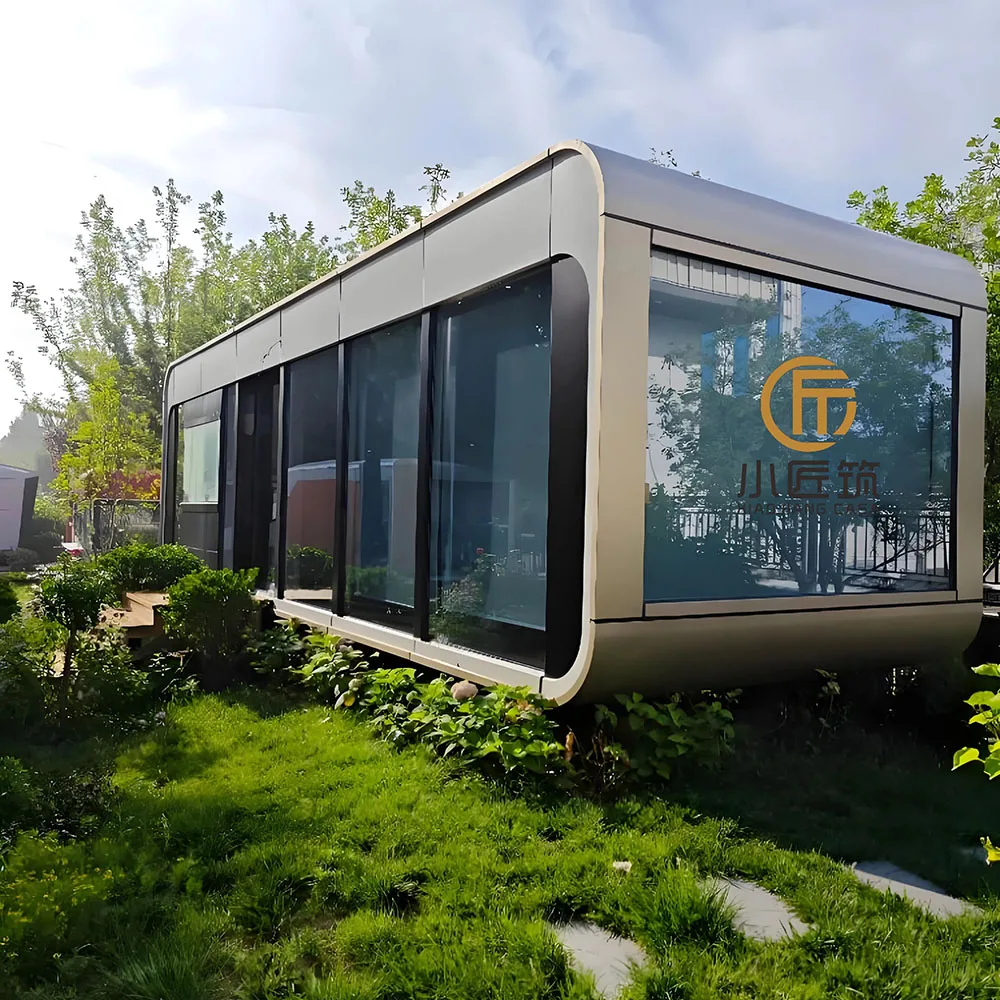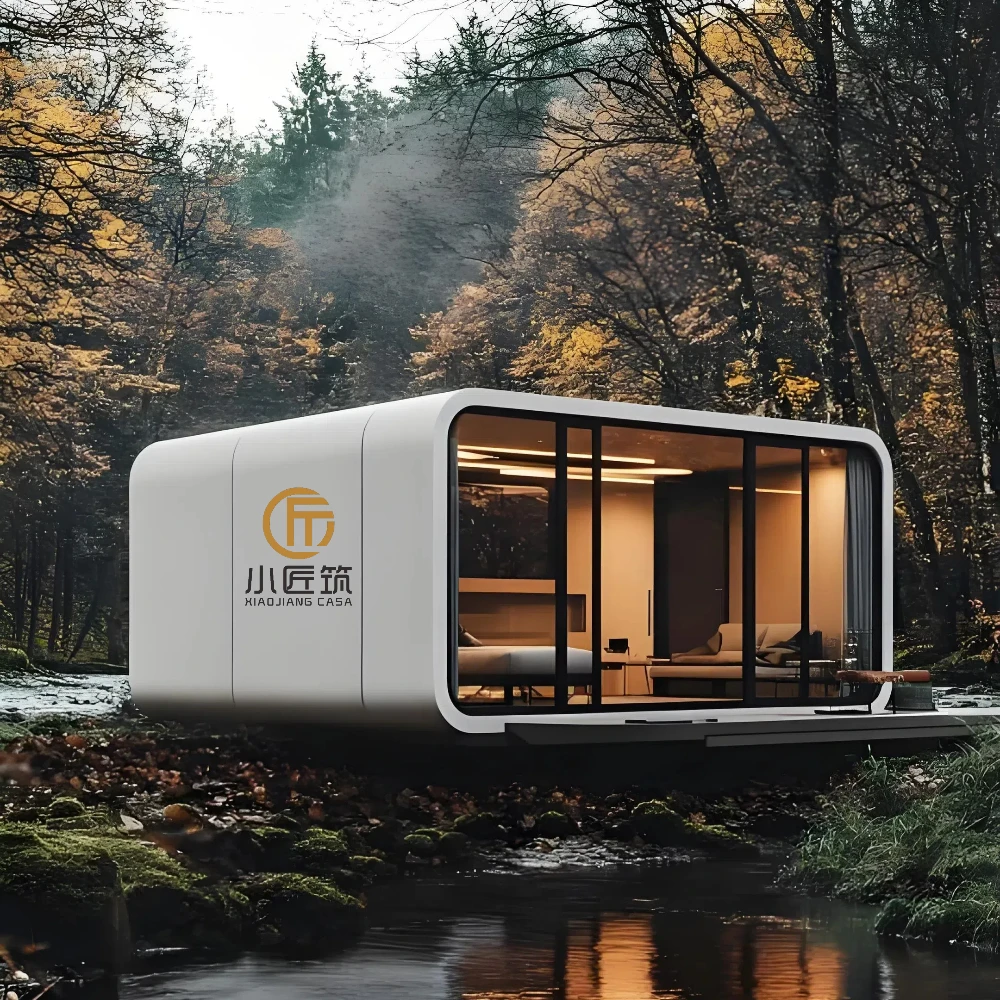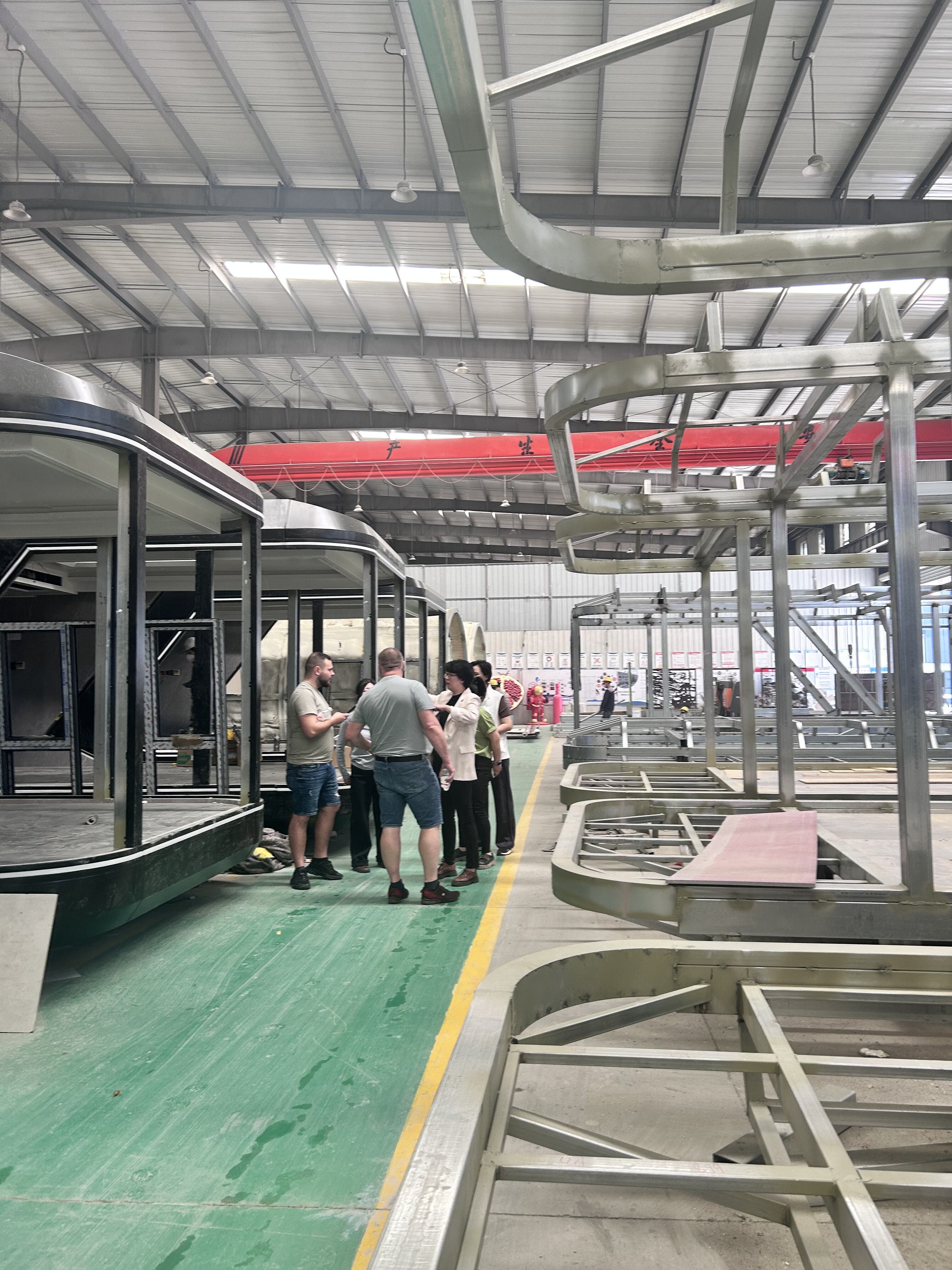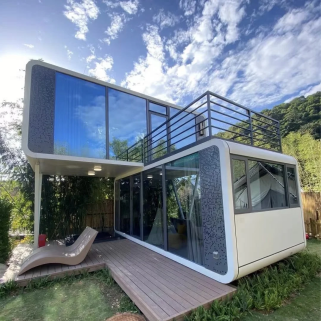Luminum Naturalium et Commodorum Sanitariarum in Dispositione Solariorum Maximizatio
Usus strategiae fenestrarum, lucarnarum et tectorum vitrearum ad lumen diei augendum
Hodie heliaria multam lucem naturalem admittunt, propter strategice positas fenestras, grandes lucernaria et specialem vitro ferri paucis impositum in tecto. Studium a Collegio Investigationis Luminum Architectonicorum anno 2020 editum repperit, quod cum omnes hi elementi simul operantur, heliaria fere 78% plus usus lucis diei consequantur comparata cum extensionibus domesticis vulgaribus. Etiam vitrum est valde callidum: habet nitora efficientiae energeticae quae maximam partem luminis transmittunt, sed circiter 95% noxiorum radium UV prohibent. Ita loci fiunt valde clari atque tamen muniti, ita ut interdum difficile sit discernere ubi desinat intus et incipiat foris.
Quomodo lux naturalis meliorem affectum, absorptionem vitamini D et rhythmus circadianos promovet
Lumen naturale in hortis hyemalibus capiendum aliquas magni momenti salutis habet. Corpora nostra circa 30 minuta mane foris agentia fere 1.000 IU vitamini D producunt, quod circiter dimidium eius rei est, quod a National Institutes of Health cotidie commendatur. Expositio lumini naturali etiam in regolandis melatoninis agit, ut noctu melius quiescamus. Studia ostendunt eos, qui tempus in locis solis plenis agunt die, circa 25% magis habere serotonini quam qui in locis sine fenestris manent, quod praecipue iuvat eos, qui tristitiam hiemalem patiuntur. Plures horti hyemales molle illud lumen septentrionale capiunt, quod inter 800 et 1.100 lux mediae fortitudinis attingit, idoneum ad legendos libros vel diu intentionem retinendam sine offensa visus ex lumine directo solis.
Exemplum Studii: Efficacia luminis diei in horto hyemali ad septentrionem vergente
In domo Vermontiae quae septentrionem spectat, architecti vias callidas invenerunt ad defectum expositionis australis circumveniendum. Fenestras cleristorii obliquas hasce fere ad 45 gradus collocaverunt, ut omne lumen hibernum quod intraret caperent, superficies internas valde reflexivas (circiter 92% reflexionis) adhibuerunt ut lumen circumpelleretur, et harum specierum vitrea prismatica scintillamenta addiderunt quae lumen verticaliter melius propagant, diffundens circiter 40% plus quam regularia. Etiam si non multum solis directi intrabat, area vivendi tamen circiter 500 lux totidemque 14 horas per diem accipiebat, quod re vera supra est quam Societas Ingenicaria Illuminationis pro spatiis otiosi commodi in domibus commendat. Punctum hic non tantum de numeris est. Demonstrat enim quod, cum architecti materiales diligenter eligunt et angulos rectos efficiunt, etiam aedificia cum accessu solari infelici clara et iucunda sentiri possunt sine lumine artificiali per totum diem confisi.
Continua Connexio Intus-Foris Per Designationem et Agrorum Dispositionem
Spatia Transeuntia Disingens cum Parietibus Vitreis Glisantibus et Pavimentis Consonis
Cum parietes vitrei glisantes angustos habent frames, fere continua foramina inter intima et extima loca creant, praesertim ubi penitus retrahuntur. Sensus continuitatis melior fit, si materiae pavimenti, ut testae porcellanae vel saxa aspera textura, directe in spatium peristylii protrudantur. Aequales altitudines laquearum convenientes et quaedam interiora ornamenta extra imitata magis iuvant, ut omnia melius confluant. Ex recenti scrutinio a National Association of Home Builders anno 2023 factum, circiter duae tertias domus dominorum hasce qualitates in summa ratione pro sunroomibus per omnes annis ponunt, quod ostendit quantum hodie in domibus suis valeant.
Viriditatem, Plantas Intrinsecas et Agrorum Externorum Dispositionem Integrandum ad Impressionem Biophilicam
Additio plantarum ad hortos solares eos propius naturae reddit. Homines saepe magnas plantas foliosas, velut ficus lyrata, iuxta fenestras collocant, quod imitat quod foris in hortis suis vident. Horti verticales parietibus instructi etiam adiuvent angulos asperos frangere et spatia mollius facere. Exteriores dispositio hortorum optime succedit cum variis stratis utitur. Incipe cum parvis fruticibus iuxta laminas vitreas, deinde progredere ad plantas mediocres ulterius positas, et demum addito arbores altas quae pulchrum fundum creent. Investigatio super desitione biophila demonstrat has structuras stratificatas lineam inter areas habitaculi et naturam revera confundere. Recens studium anno 2024 repertum est quod circiter 40% hominum minus anxios se sentire in hortis solaribus sic dispositis, licet aliqui dubitent an numerus ille sit satis magnus ad omnes curas superstructivas iustificandas.
Annui Commoditas Perpetua per Regulamentum Climatis et Efficientiam Energetici
Bonam horti solaris constructionem significat idoneam combinationem inter captationem solis naturalis et temperiei regulandae efficacitatem. Pavimenta lapidea valde bene operantur ad calorem per diem absorbendum, dum thermostatia intelligenta tantum tum calefactionem excitant, cum temperatura supra 78 gradus Fahrenheit excedit. Secundum quasdam investigationes a Departamento Foenoris Civitatum Foederatarum anno 2022 factas, haec coniuncta ratio usum electricitatis in locis ubi tempus anni vario modo mutatur inter 18 et 22 pro cento minuere potest. Vere constat, quia spatia commodiora efficienda sunt, neque tamen vis electrica semper frustra consumatur.
Passivam solaris calefactionis et mechanicarum frigescendi rationum aequilibratio
Sensores intelligentes permitton ut heliaia passivam et mechanicam climatis regulationem sine interruptione inter se commutent. Fenestrationes ad meridiem spectantes solis calorem hieme maxime capiunt, dum umbrae retractiles et ventilatio transversa aestate nimiam caloris accumulationem prohibent. Aedificia quae algorithmos climatis adaptivos utuntur usque ad 30% altiorem efficacitatem energeticiam consequuntur eorum quae in adjustmentibus manualibus innitantur.
Materiales energetice efficientes: fenestrae thermice isolatae et performatio thermalis (U.S. DOE, 2022)
Fenestrae triplici strato cum laminis low-E et argone plenae nunc U-valoribus usque ad 0.15 consequuntur—40% meliores quam unitates bipartitae communes. His cum fenestrarum cornibus alluminii thermice interruptis iunctis, condensatio prohibetur et 85% luminum visibilis transmissio servatur, idoneae facientes pro heliaiis ubi tum perspicuitas tum insulatio criticae sunt.
Analysis controversiae: ponderatio inter lucis solis captationem et pericula nimiae calefactionis
Secundum novissimum Sunroom Design Survey ex anno 2023, circiter sex ex decem architectis dicunt solarem incrementum regendum esse suum maximum dolorem capitis quando huiusmodi loca designant. Magnae laminas vitreas profecto multam lucem naturalem admittunt, sed tempore aestatis in regionibus calidis, expensae frigorationis possunt augeri inter 15 usque ad fortasse 25 pro cento amplius. Architecti ad remediola callida huius problematis vertuntur. Vitrum electrochromicum colorem mutat cum sol nimis validus est, et nunc thermostata systemata sunt quae secundum data loci operantur. Haec technologiae disegnatoribus permittunt pulchra spatia aperta servare et tamen interiora durante his diebus aestuosissimis confortabilia tenere.
Multiplex Utilitas: Quomodo Sunrooms Cotidianam Vitam Meliorant
Sunroom ut Officium Domesticum: Productivitatem Lucem Naturalem Augentem Incrementans
Solaria crebrius utuntur officinis domesticis, quae ordinationem ergonomicam cum luce naturali copiosa iungunt. Studium locorum laboris anni 2023 invenit, eos qui in locis lumine naturali illustratis laborant 18% altiorem efficacitatem reportavisse quam qui in ordinariis officinis operantur. Positio scrinia iuxta fenestras oriens spectantes utitur leni luce matutina simulque glarem in tabulis minuit, quod intentionem et visum commoditatemque auget.
Dispositiones Flexibiles ad Cenandum, Relaxandum, Legendum, et Diverticula
Mobilia modularia et zonae intelligenter dispositae efficiunt, ut solaria per diem varia munera obeant:
- Mensa cenatoria retractilis expanditur ad cibum sumendum et redit in formam consolli
- Plantaria mobilia zonas inter recessus lectionis et loca diverticulorum definiunt
- Subsellia incorporata geminam functionem habent: servant stragulas, libros, et ludos
Hae accommodationes adaptabiles varias actiones intra spatium angustum sustinent.
Consilia ad Spatii Usum et Compatibilitatem Optimum Faciendam
Tria rationes probatae sunt, quae utilitatem in solaribus plures functiones habentibus augent:
- Superficies verticales — Loculi volantes supra sedilia offerunt conservationem sine inordinatione
- Zonatio climatica — Directi ventiles calefactionis et refrigerationis versus centra actionum potius quam versus parietes periphericos
- Gradus pavimenti — Strate tapetes ad zonas distinguendas sine mutationibus structurales permanentibus
Cum ratione bene habita, solarium 12’ x 16’ potest efficaciter accommodare opus remotum, cibatum familialem et quietem—efficiens emendationem functionalis utilitatis in 270% super loca unicae functionis.
Consonantia Stilorum Solariorum Modernorum cum Architectura Domus Praesente
Tendentiones Designandi Minimisticae et Biophilicae in Solaribus Contemporaneis
Huiusmodi loculi solares hodie ad tendentiam simplicitatis cum naturae gustibus accedunt. Lineae purae, spatia aperta multa, et fenestrae magnae a solo usque ad tectum faciunt ut locus totus cum eo quod extra est coniunctus videatur. Etiam materiae momenti sunt: vitrum temperatum lucem admittit nec facile frangitur, et argentei aluminis trabes pulvere cocti adversus tempestates resistunt simulque bene videntur. Quedam recens studia demonstraverunt hos simplices dispositions loculorum solarium usque ad 25% in expensis energiae minuere posse. Id fit quod saepe includunt fenestras triplex vitro tectas et speciales tectorum compositos. Additio ligni naturalis, superficierum textarum, et etiam hortorum interiorum parvorum plus facit quam bene visum: iuvat homines esse tranquiliores et laetiores, sicut studia in psychologia environmentali per annos demonstraverunt.
Integratio Architectonica: Materialia, Lineae, et Aesthetica Consonare Debent
Ut integratio perfecta sit, descriptio loculi solaris cum sermone architectonico domus congruere debet:
- Materialia Rectoris aluminium convenit exterius modernis; lignum vel vinylem aptantur domibus traditionalibus
- Formae tectorum respondent formis tectorum cum gabelis, coxalis aut scapularibus structurae principalis
- Dispositiones fenestrarum imitantur proportiones fenestrarum et locata existentia
Exempli gratia, domus Colonialis Revivalis ex lateribus bene componitur fenestris divisas et fenestris alluminii argenteis-arduisis, dum domus mediaevi moderna proficit a tectis planis et parietibus vitreis continuatis. Repetitio colorum picturae exterioris aut materiae pavimentationis interioris unitatem firmat, miscens functionem hodiernam cum fide architectonica.
Saepe Interrogata Quaestiones
Quae sunt praecipua lucis naturalis beneficia in cubiculis solariis?
Lux naturalis in cubiculis solariis potest meliorare affectum, absorptionem vitamini D, rhythmus circadianos, etiamque auxiliari nivem serotonini, meliorans sanitatem generalem.
Quomodo parietes vitrei glissantes connexionem inter intra et extra augere possunt?
Parietes vitrei glissantes cum costis tenuibus transitiones sine interruptione creant, pavimentis interioribus et exterioribus congruentibus, continuitatem et fluxum augendo.
Quae sunt quaedam characteristicas energetice efficientes quae sunroomis conveniunt?
Fenestrae triplicis laminis cum leviter-E vestibus, algorithmi climatis adaptivi, et glazura isolata characteristicas energetice efficientes sunt quae adiuvant ad comfortum servandum dum usus potentiae minuitur.
Index Rerum
- Luminum Naturalium et Commodorum Sanitariarum in Dispositione Solariorum Maximizatio
- Continua Connexio Intus-Foris Per Designationem et Agrorum Dispositionem
- Annui Commoditas Perpetua per Regulamentum Climatis et Efficientiam Energetici
- Multiplex Utilitas: Quomodo Sunrooms Cotidianam Vitam Meliorant
- Consonantia Stilorum Solariorum Modernorum cum Architectura Domus Praesente
- Saepe Interrogata Quaestiones








